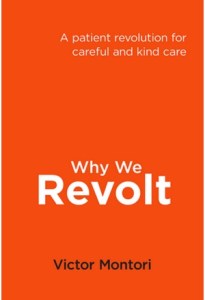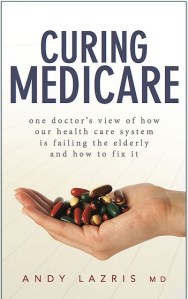There’s no dearth of books, articles and blog posts or films, documentaries and videos about elderhood, serious illness and end-of-life issues, but I’d never come across any from the perspective I know so well: that of another hospice volunteer. So I was eager to read Steve Litwer’s new book, “The Music Between Us: Memoir of a Bedside Musician.”
The fact is, being a hospice volunteer is not a group enterprise; the reason you visit a seriously ill person is to offer friendship and comfort to him or her, and by extension to a person, or people, who care for him or her. But you do it alone, not with a gaggle of other volunteers or hospice staff with you. So I was eager to read this book to do a virtual kind of “comparing notes,” to learn how the author related to and learned from the people he’d come to know, how volunteering has affected him, as well as to see how another hospice organization in another part of the country does what it does.
The book offers all that. It depicts many special moments between the author and the people he visited that resonated with me, which itself was welcome particularly at a time when the pandemic has made it impossible for volunteers to continue doing what we do, much less talk to one another about it. But you don’t need to be a volunteer or extra-curious about what that entails to read it. The book is a well-written, sometimes harrowing and very personal perspective on pain, loss, healing, forgiveness, wisdom and the search for a higher purpose. Plus, there are great songs built into the story. These are also available for listening on the author’s website.
The book is a memoir of Litwer’s long journey from an extraordinarily difficult childhood to often turbulent times of his own adulthood to a spiritual pilgrimage that eventually led him to fully embrace Christianity. His matter-of-fact style in relating his own shortcomings seems to expect neither excessive sympathy nor absolution from the reader. Each chapter starts with a vivid written sketch of an individual he has played guitar for and like a jazz riff, moves on from there to relate to relevant pieces of his own evolution.
Litwer became a bedside musician after retiring in his early sixties. He writes that when he started, “I slowly learned to become vulnerable with [the dying]…Participating in one of the most tender moments of others’ lives through songs and companionship would often leave me also feeling this way. It was in this state, that I experienced the slow emergence of pieces of my own past, percolating up through lost times of my own life.”
After I read the book, I was glad for the opportunity to ask Litwer a few questions as a follow-up. Some highlights:
How have things changed for you since the pandemic began?
I have not visited a client since March of 2020. That’s when most activities for hospice volunteers abruptly ended. (I did record some video of my guitar playing which was sent out by one of the two hospice agencies where I volunteer.) As the Covid-19 numbers accelerated, I like so many, contemplated my own experience of isolation. I thought about how much more difficult that was for patients dying alone, without the in-person presence of friends and loved ones. Some of this became reflected in the book before it was published.
How do you deal with the reality that you can connect more with some people than with others?
If I am going to be of any value to the clients I visit, it’s incumbent on me to make the effort to connect in any way possible — to be in their space — through friendly small talk or just being a calm presence. I try to remember that I am not there to fix them and that I certainly can’t cure them. I also accept that I am going to connect with some folks more than others, especially if we have something common in our backgrounds or our personalities are simpatico.
Fortunately, this becomes easier with all types of folks, given that the music I bring can serve as a great bridge between us. That is, if I’m creative enough to quickly discover what songs touch them. Although I am a child of the 1960s steeped in the music of that era, the great American music catalogue is so broad and deep, with so many iconic songs that are familiar to most people, there’s much for everyone to enjoy in just about any music genre. One doesn’t even have to be a musician to create meaningful musical connections. Music helps to open a personal connection with patients, even if they cannot verbally communicate with me.
How do you take care of yourself if or when the sadness or gravity of the work affects you?
At times, I do find myself sad after witnessing someone decline and pass away. Here’s what helps me: prayer – for myself and the client before or after a visit. Also, meditating on the idea of non-attachment to one’s environment and the suffering of others, which can be challenging. Since I was writing my memoir through much of my pre-pandemic volunteering, that became a sort of contemplation of both life’s sadness and joy. The book was an outgrowth of the journaling I did following most client visits. It’s a great tool for self-expression and then ‘letting go.’
Do you share experiences with other volunteers? Is there any formalized way of providing support to volunteers?
The easiest thing might be organized live streaming video calls using platforms like Zoom, moderated by a hospice Volunteer Coordinator. However, I have not seen that.
While speaking with various leaders at local hospice agencies about my book, one came up with the idea of creating a sort of book club for volunteers, using “The Music Between Us.” The idea was to provide them the book and then host a discussion group on a Zoom call. I would join the call also to take questions about the book. I think creative ideas like this, using video technology can carry over, even after we move beyond COVID restrictions.
And on that note…here’s a link to Steve Litwer’s website and book.







 Sometimes Andy Lazris is not popular with the adult children of the very old people he sees in his practice as an internist and geriatrician as well as in his role as medical director at assisted living and skilled nursing facilities. Why? Because his is a “less is more” approach to care for elders who typically live with multiple chronic conditions. He believes in fewer diagnostic tests, less clinging to the orthodoxy of “ideal” numbers gauging, for example, glucose, blood pressure and cholesterol. His focus is on helping his patients live a better life, and he favors better nutrition, more physical activity and social engagement. He also has a deep appreciation of the fact that aging, decline – mortality itself — are inevitable facts of life.
Sometimes Andy Lazris is not popular with the adult children of the very old people he sees in his practice as an internist and geriatrician as well as in his role as medical director at assisted living and skilled nursing facilities. Why? Because his is a “less is more” approach to care for elders who typically live with multiple chronic conditions. He believes in fewer diagnostic tests, less clinging to the orthodoxy of “ideal” numbers gauging, for example, glucose, blood pressure and cholesterol. His focus is on helping his patients live a better life, and he favors better nutrition, more physical activity and social engagement. He also has a deep appreciation of the fact that aging, decline – mortality itself — are inevitable facts of life. 